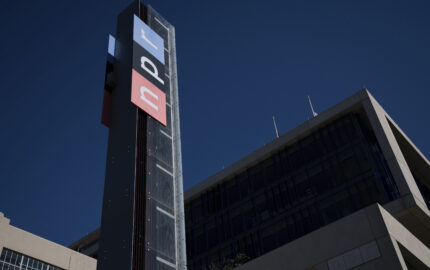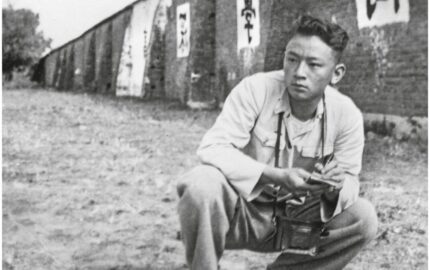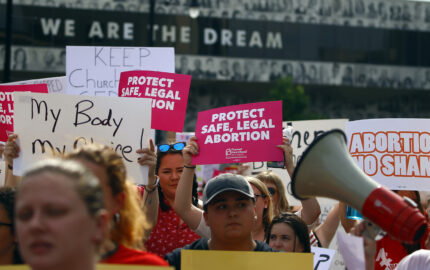
As a former journalist, it’s difficult for me not to be overtaken in my scholarship about news reporting by the actual events that drive the news. Their beckoning—in ways that are clear, compelling and relentlessly relevant—often leads me to my next research agenda. In recent years, I’ve been drawn to examine the reporting of war and acts of terror, and my work area is as filled with old newspapers and videotapes of news shows as it is with books.
This interest was accompanied by a certain degree of déjà vu when I contemplated the idea of coediting a book on war reporting presented to me by a colleague. Stuart Allan of the University of the West of England in Bristol, United Kingdom, with whom I had coedited “Journalism After September 11” in 2002, believed the war against terror’s move into battlefield engagement between nations signaled a need for a second volume to tackle the issues of reporting war. I wasn’t as convinced. While the events of September 11th were finite and thus more amenable to scholarly analysis (even if the ramifications of the events loomed large and without resolution), the wars, first in Afghanistan, then in Iraq, were messy, amorphous and seemingly without end. Even today, I remain unclear about what might actually be the best time for an academic analysis of journalists’ coverage of these wars.
Though this book’s timing was perhaps not ideal, there were enough troublesome issues in reporting on these wars to push us toward a more immediate analysis. And so we embarked on our project. Our interest was in evaluating changes brought about by the pacing of war and in the technological modes of reporting war, in the presumed responsibilities war reporters have and the dangers they undergo, in wavering degrees of governmental interference with reporting, and in the impact public opinion was having on coverage. Some of these changes have been long in coming—the result of incremental adaptations between journalists and the political, social, cultural and economic institutions they cover. Other changes emerge as unanticipated metamorphoses of issues broader than journalism and are borrowed either from earlier wars or adapted in a piece-by-piece crafting of journalistic practice.
Through our research and writing, we hoped to contribute alternative perspectives to pressing debates. To accomplish this, we brought together leading figures in the field—including practicing and former journalists, as well as academics with longstanding research interest in journalism—to reflect on coverage of the war in Iraq as well as on the reporting of many other conflicts during the past decade and a half. By making the book’s scope broad, we wanted to generate wide-ranging questions about reporting on war and about its connections with other forms of journalistic practice. By examining problems related to journalists’ allegiance, responsibility, truth-seeking and balance, and the difficulties they faced in resolving such issues while reporting on war, we hoped these experiences could be a litmus test for thinking about issues in journalism more broadly.
Journalism in Wartime
“Reporting War: Journalism in Wartime” turned out to be a litmus test in more ways than we could have imagined. In it, scholars and journalists track problems, issues and dilemmas that reporters confront when they are responsible for covering war. Its dual analysis of issues—local and global, broad and small, amorphous and contained—reveals that reporting on war is inevitably made more complicated by unanticipated challenges.
The book tracks war journalism since 1990, allowing the reader to understand how, in this brief time, the nature of war has changed and how these changes alter the ways in which journalists report on it. Their assignment is looked at in diverse locales across Africa, the Balkans, and the Middle East— especially in Iraq—and Southern Asia. Writers examine how U.S. and British news media, in particular, rely on Western assumptions—political, cultural and moral—in their reporting about how and why war is waged.
The book concludes that reporting on war deserves a special place in the repertoire of practices by which reporters work. But at the same time, the pitfalls and unevenness that characterize war journalism raise serious questions that are pertinent to the practice of journalism more broadly.
“Reporting War” has three major sections:
The first section focuses on war in the 21st century. It tracks issues such as the impact of the narrative form on war journalism, tackling censorship and reporting, the topic of deference to official framings of the war, and the rise of terrorists as legitimate news figures.
The second section explores the role of journalists in bearing witness to war. It considers how the logic from old wars is recycled into new ones, the impact of visual images and the reporters’ accommodation to military language, and the tensions between objectivity, patriotism and humanitarianism.
The last section addresses the Iraq War, examining its coverage in newspapers, wire service reports, TV (including local U.S. stations, the BBC, and Al Jazeera), grass-roots reporting and online journalism, as well as coverage of dissent about the war.
In each of these sections, contributors illuminate how the exigencies of reporting war challenge the practice of journalism. In looking closely at the reporting that resulted and by raising questions about how it took its shape, “Reporting War” offers journalists a variety of ways to think about war reporting. The book also suggests that what happens in this realm can serve as a barometer by which to guage to journalism’s future.
Barbie Zelizer is the Raymond Williams Chair of Communication at the Annenberg School for Communication at the University of Pennsylvania. During the spring 2004 semester, she was a fellow at the Joan Shorenstein Center on the Press, Politics & Public Policy at Harvard University.


